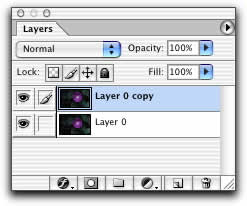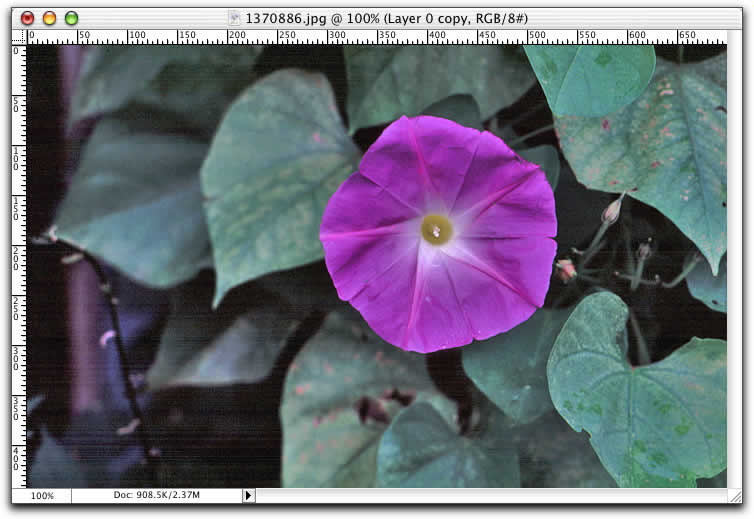Shadow/Highlight inside Photoshop CS part 2
With the Highlight value, the same rules apply, so there’s no need to go into those. The next parameter down, Color Correction allows you to make the colors in the corrected regions more or less vivid. (On grayscale images, a Brightness adjustment is available instead.) The examples below show varying degrees of Color Correction. The default is +20, which you’ve seen in all of the previous images. (All of the examples below use Shadow and Tonal Width values of 100 and a Radius of 30.)

Now obviously when you’re pulling out detail from the dark areas of an image, some of that detail is bound to be in the form of noise or artifacts. For example, in the image below, when I crank up the Shadow value to 100 percent, I see strong horizontal noise emerging from the image.

So how can this be alleviated? How can you get the detail without so much noise? Here’s how.
1. Convert your background to a layer by double-clicking it in the Layers palette. Then duplicate that layer.

2. Working on the top layer, apply your Shadow/Highlight adjustment.

3. In the Layers palette, move the original bottom layer up to the top of the stacking order.

4. With the top (darker) layer selected, switch its blending mode from Normal to either Soft Light or Pin Light. And voila!

All of the detail and little of the noise.


Comments